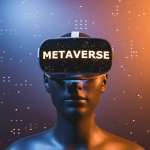Since its inception in the mid-1990s, social media has woven itself into the fabric of our daily lives, transforming communication, networking, and information dissemination. From the emergence of platforms like YouTube, Instagram, Snapchat, and TikTok, we’ve traversed a considerable distance from the days of pigeon-post communication. Here we are going to tell you the importance of social media, its benefits, drawbacks, and the emergence of decentralized social media platforms as a potential game-changer.
Dual Nature of Social Media
While social media offers numerous benefits and captivating features, it’s crucial to recognize its flip side as well. Issues like censorship, speech suppression, privacy concerns, and social manipulation have garnered attention. The modern social media landscape is complex, entailing profit-driven entities vying for user data in a competitive market. The notion of privacy has been blurred, and user data often serves as a commodity for advertising purposes.
Enter decentralized social media. This paradigm shift introduces a novel approach to social networking. Unlike traditional platforms controlled by a central authority, decentralized networks distribute power among users. This decentralization offers several advantages: enhanced privacy, transparency, and security, allowing users greater control over their digital identities, data, and content. In this realm, freedom of speech thrives, and ideas flourish sans the fear of censorship.
Decentralized platforms address concerns over data exploitation by giving users direct control over their information. This shift empowers users, enhances privacy, and bolsters the user experience.
Also Read: Rapid Advancements in AI Pose Similar Risks as Social Media
Emergence of Social Finance (SocialFi)
Within decentralized social media, the concept of Social Finance (SocialFi) has emerged. Combining social media with Web3 and decentralized finance (DeFi), SocialFi introduces a creator economy driven by tokens, both fungible and non-fungible. This includes the introduction of “social tokens” that empower content creators by monetizing their contributions.
Social tokens serve as in-app utility tokens, incentivizing content creation and engagement within the decentralized platform. This new economic model encourages creativity and active participation among users.
Challenges and Prospects
Decentralized social media presents a transformative shift, yet it’s not without challenges. Overcoming the dominance of centralized platforms, the steeper learning curve, scalability issues, volatility in the cryptocurrency market, regulatory hurdles, and user adoption are some of the roadblocks. As the technology evolves, these obstacles might find solutions.
Blockchain-based vs. Non-blockchain-based
There are two types of decentralized social media platforms: blockchain-based and non-blockchain-based. Blockchain-based platforms, like Steemit and Lens Protocol, leverage blockchain’s transparency and immutability to secure user data. Non-blockchain-based platforms, such as Mastodon, employ federated models for enhanced privacy and user control.
Also Read: Dynamic Landscape of Layer 2 Solutions in Blockchain Scaling
Conclusion
Decentralized social media holds immense potential to revolutionize the digital landscape. While centralized platforms come with their own benefits and drawbacks, the move towards decentralization promises user empowerment, privacy, and control over personal data. Even established Web2 platforms like Reddit, Meta, and Twitter are exploring decentralized features.
As the community continues to innovate and confront challenges, the future of social media appears more inclusive, transparent, and resilient. Decentralized social media not only presents an alternative but a transformative step towards a more user-centric online experience.

We are the founders of Techspurblog and we have been in this industry for over Four years. We pride ourselves on being the global leader in developing Technology Blog, which can create original content.
We are a team of enthusiastic people who want to share our experience, knowledge and enterprise with the world. We love what we do and we hope you will too!





